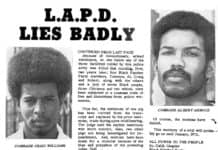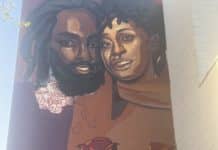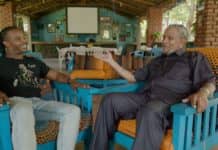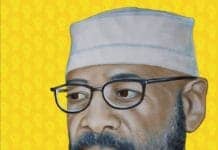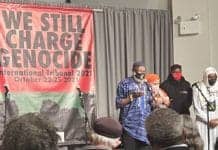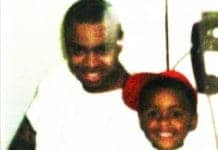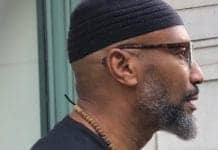by Ward Churchill, Kathleen Cleaver and Natsu Taylor Saito
Sept. 9, 2012 – Former San Francisco Chronicle reporter Seth Rosenfeld reveals in his newly-released book, “Subversives: The FBI’s War on Student Radicals, and Reagan’s Rise to Power,” that the late Richard Aoki, an extraordinary Asian American activist, was a long-term FBI informer. From there, Rosenfeld goes on to assert that Aoki was not only a paid snitch but an agent provocateur as well, having provided “the Black Panthers some of their first guns and weapons training, encouraging them on a course that would contribute to shootouts with the police and the organization’s demise.”

Anyone familiar with the party’s history will recognize that Rosenfeld’s depiction of Aoki as “the man who armed the Black Panthers” is decisively at odds both with reality and the sources he cites to support this assertion. This is equally true with respect to Rosenfeld’s conclusion that “by any reckoning” Aoki’s provision of an M-1 carbine and a 9mm. handgun to Party founders Huey P. Newton and Bobby Seale, at their request, “brought violence, legal trouble, and discredit to the Panthers” and thus may have been designed to “set them up.”
To arrive at his conclusion, Rosenfeld simply disregards inconvenient facts. He ignores the endemic pattern of police violence against Oakland’s Black community that had existed for over two decades before Newton and Seale founded the party in 1966; that Newton and Seale adopted a posture of armed self-defense against the police from the outset, in direct response to the preexisting level of official violence; and that they drew explicitly upon the concepts of Malcolm X and Frantz Fanon, as well as the concrete examples of Robert F. Williams in North Carolina, the Deacons for Defense and Justice in Louisiana, and the Lowndes County Freedom Organization in Alabama.
Similarly unremarked is the fact that the Black Panthers’ armed street patrols dramatically reduced the level of violence visited by Oakland’s white cops upon the city’s Black residents. Far from bringing “discredit to the Panthers,” as Rosenfeld contends, a poll conducted by the Wall Street Journal in 1969 revealed that the Panthers’ willingness to pick up the gun under such circumstances had earned them the admiration of an astonishing 62 percent of inner city Blacks and was being emulated by organizations emerging among other peoples of color, as well as certain sectors of the white left.
The Black Panthers’ armed street patrols dramatically reduced the level of violence visited by Oakland’s white cops upon the city’s Black residents, earning the admiration of 62 percent of inner city Blacks, according to a 1969 Wall Street Journal poll.
Although Rosenfeld does concede that “carrying unconcealed weapons was legal [in California] at the time,” he nonetheless claims “there is little doubt that their presence contributed to confrontations between Panthers and police.” He never acknowledges anything untoward about the police responding violently to Blacks “guilty” of exercising their rights, or that the police made no comparable response to the Ku Klux Klan, the Secret Army Organization and other rightwing organizations comprised of armed and demonstrably violence-prone whites.
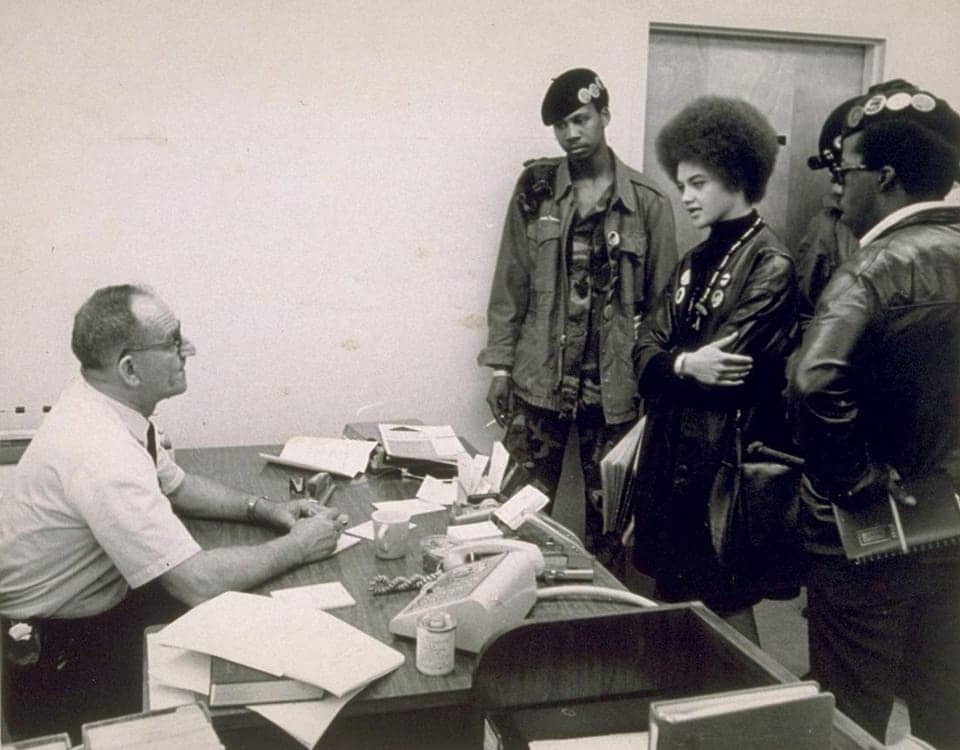
The way Rosenfeld presents radicalism in the 1960s is clearly intended to influence young activists today. This generation has been exposed to the horrors of war, as well as officially sanctioned torture, extraordinary rendition, targeted killing, and economic and environmental devastation.
As young people begin challenging these realities, they look to the history of movements that inspired previous generations. Those committed to preserving the status quo devise means of discrediting such movements and their leaders. A government considering itself at war with dissent will inevitably empower its security and intelligence apparatus to use psychological as well as physical means of repression.
A key weapon in their arsenal is the spreading of false and derogatory information – “disinformation,” in the counterintelligence vernacular – to “disrupt, destabilize, discredit, and destroy” radical activists and organizations. The FBI has utilized numerous techniques to convey such disinformation, from planting rumors in targeted communities to mass dissemination of half-truths or outright lies through the press, electronic media and books claiming to provide “objective” analyses.
The government’s use of disinformation for repressive purposes traces back at least as far as its campaigns to “neutralize” the anarchist and Garvey movements during and shortly after World War I. Since the process was systematized in the 1930s, an ever-greater flow of material crafted by the FBI’s in-house spinmeisters and an unknown number of contract writers, collaborating scholars, and cooperating journalists, has been devoted to burnishing the bureau’s public image while degrading its adversaries.
Aoki had demonstrated exceptional leadership in building radical coalitions among Asian Americans, Mexican Americans, African Americans and Native Americans in the Third World Liberation Front and other organizations. Perhaps the lesson we can draw from his legacy is, as the late Kwame Ture observed, one is obligated to speak the truth even if when one cannot practice it. That Aoki’s accomplishments inspired younger generations of Asian Americans to become social activists must have disquieted the FBI, the agency most responsible for maintaining the social hierarchy and undermining political challenges to racist divisions.
Aoki had demonstrated exceptional leadership in building radical coalitions among Asian Americans, Mexican Americans, African Americans and Native Americans in the Third World Liberation Front and other organizations. That Aoki’s accomplishments inspired younger generations of Asian Americans to become social activists must have disquieted the FBI, the agency most responsible for maintaining the social hierarchy and undermining political challenges to racist divisions.
Rosenfeld’s deliberate distortions of the general history and context of Richard Aoki’s activism do not resolve the disturbing question of Aoki’s relationship to the FBI. Nonetheless, it is useful to consider the way in which Rosenfeld obtained and presented his information because it raises significant questions about what his book and subsequent articles and press releases are intended to convey.
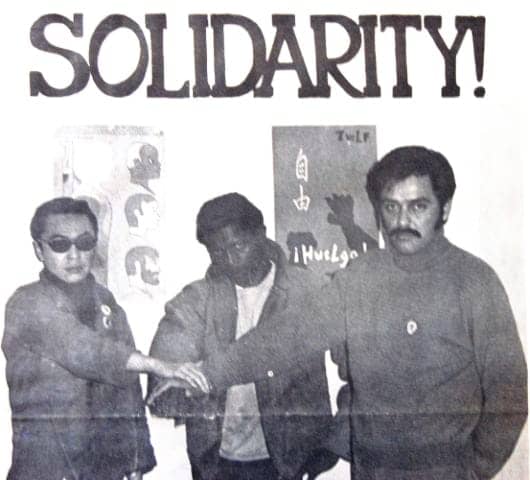
It seems a bit too coincidental that this information was made available to Rosenfeld just as two UC Berkeley students, Ben Wang and Mike Cheng, were producing the documentary film “Aoki,” released in 2009, and Asian American scholar Diane Fujino was researching and writing Aoki’s biography, “Samurai among Panthers,” published earlier this year.
The timing of this week’s release of FOIA documents – just after a wide range of scholars and activists had challenged the accuracy of Rosenfeld’s claims on the basis of the lack of evidence in his book – raises similar questions.
The Black Panthers are peripheral to Rosenfeld’s study, and he failed to mention numerous other informants and/or provocateurs in that organization. So why is Aoki-as-informant-arming-the-Panthers central to Rosenfeld’s revelations? A range of messages is embedded in the way information about Aoki has been made public:
There really is an FBI agent behind every mailbox. You can’t trust anyone involved in a strong movement for social change, no matter how stellar their reputation. Never trust an Asian – they’re sneaky, and often spies. Trying to develop alliances or coalitions across color lines is a hopeless exercise. There is no legitimate basis for advocating armed self-defense, and anyone proposing to go beyond passive, symbolic protest must be a provocateur. In fact, resistance is futile.
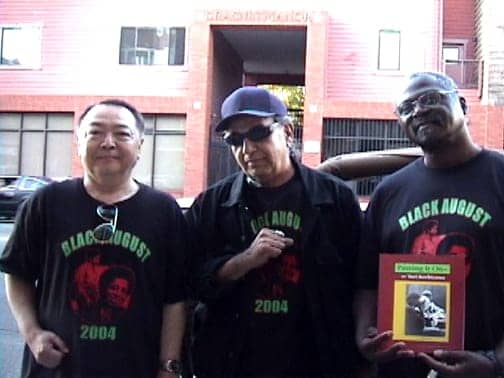
In the face of this harsh reality, it is all the more imperative that we continue to transform our communities by engaging in the serious work of cultural, political and economic liberation.
All power to the people!
Ward Churchill, a professor of ethnic studies at the University of Colorado at Boulder from 1990 to 2007, has written or coauthored 14 books and more than 150 published essays. Kathleen Cleaver joined the Black Panther Party in 1967, serving as national communications secretary and the first woman member of the party’s central committee. She earned her law degree from Yale and currently teaches at Emory Law School. Natsu Taylor Saito also earned her law degree at Yale and teaches at Georgia State University College of Law, focusing on the legal history of race in the U.S. The Bay View thanks Freedom Archives for providing this story.

 Store
Store


